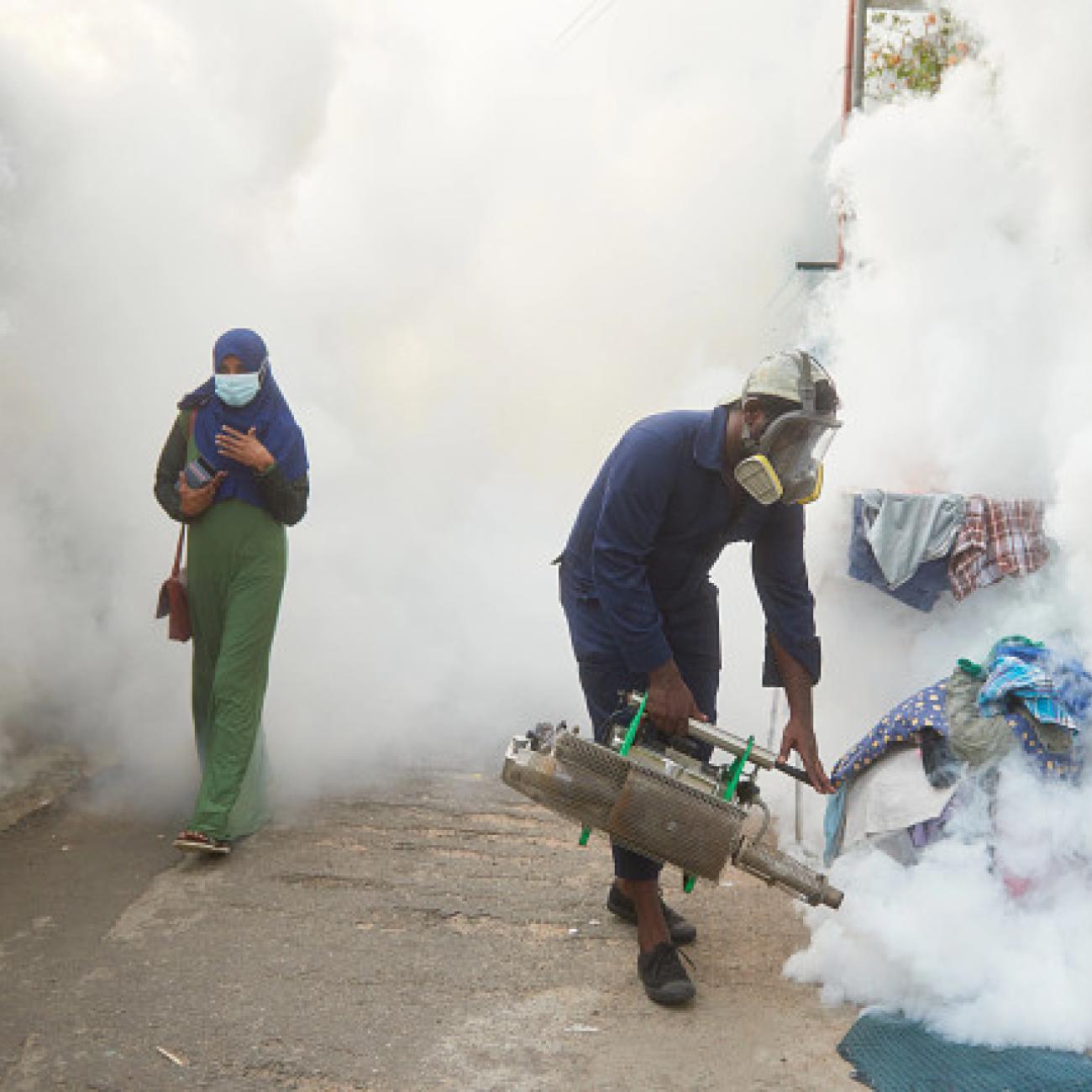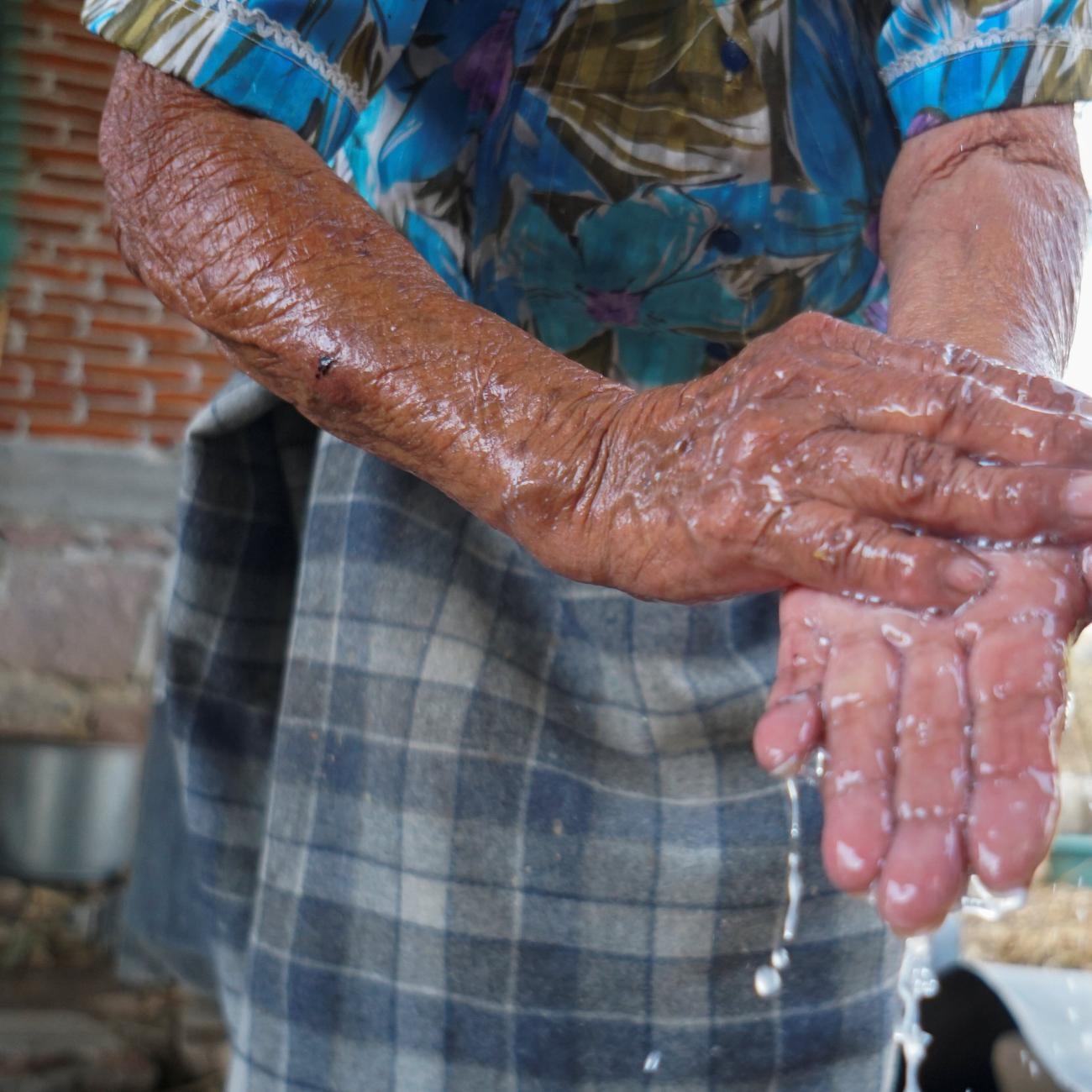Three years ago, the World Health Organization (WHO) called climate change the "single greatest health threat facing humanity." Since then, the stakes have only increased. The health threats associated with climate change have grown more serious, widespread, and urgent.
Later this month, the World Health Assembly—the WHO's primary decision-making body—can turn health rhetoric about the climate crisis into action by adopting a resolution on the climate-health challenge and approving the WHO's next global program of work.
The resolution and the program both elevate climate change as a global health issue and lay out clear directives on climate and health for the WHO and its member states. Implementing those decisions will require a strategy for sustainably financing climate-resilient health systems.
Health Systems Are Not Ready
The health impacts of climate change are no longer a distant threat projected by scientific studies. In the United States, wildfire smoke from 2012 through 2014 led to an estimated 4,000 premature deaths and $36 billion in losses. In Pakistan, catastrophic flooding in 2022 increased malaria cases fivefold, with fatalities from the disease far exceeding direct deaths from the floods. In 2023, severe flooding from Cyclone Freddy resulted in the largest cholera outbreak in Malawi and caused almost $2 billion in damages in Mozambique.
The resolution and the program both elevate climate change as a global health issue and lay out clear directives on climate and health
Unfortunately, health systems remain ill equipped to confront the climate crisis. A 2021 WHO survey confirmed that only 27% of countries had conducted assessments of the climate resilience of their health-care facilities and less than 40% of countries actively integrated weather and climate information into routine health surveillance.
Momentum, however, is building to address the health impacts of climate change, especially in communities that are most vulnerable. Countries that have joined the Paris Agreement on Climate Change make commitments—called nationally determined contributions—to mitigate climate change and adapt to its effects. A 2023 review of such contributions found that 91% of parties to the agreement included health considerations in them, and 30% identified the health co-benefits of climate mitigation.
Important diplomatic forums in 2023 also elevated the need to tackle climate-health risks. The Group of 20 (G20) did so in the G20 New Delhi Leaders' Declaration. The twenty-eighth conference of the parties of the UN Framework Convention on Climate Change (COP28) held in the United Arab Emirates adopted a Declaration on Climate and Health and supported the drafting of the Guiding Principles for Financing Climate and Health Solutions.
The World Health Assembly's Opportunity
WHO member states can embed climate adaptation more deeply into health priorities at the World Health Assembly's upcoming meeting. The assembly will consider two measures that would advance climate action in the health sector—a resolution on climate and health and the WHO's next general program of work.
The resolution calls on WHO member states to build health-system resilience to climate change by, among other things, assessing health-sector vulnerabilities to climate change, integrating climate data into early warning and surveillance systems, and integrating health into mitigation, adaptation, and loss-and-damage actions. The resolution also directs the WHO to establish a global plan of action on climate change and health and to support member states in developing strategies to achieve resilient and sustainable health systems.
The resolution feeds into the WHO's fourteenth general program of work (GPW14), which sets the organization's strategic priorities for 2025 through 2028. The GPW14 will guide how the WHO allocates its biennial budget, currently at $6.8 billion—and will serve as the technical strategy underpinning the first WHO Investment Round proposed for the last quarter of 2024.
As approved by the WHO Executive Board in January 2024, the draft GPW14 acknowledges the existential threat that climate change poses to human health, makes climate change one of the WHO's six strategic objectives, and focuses on building climate-resilient health systems. The WHO will assess the GPW14's progress under the WHO Results Framework, which prioritizes—perhaps for the first time—measuring the resilience and sustainability of health systems.
Mobilizing Climate Finance for Health Resilience
By adopting the resolution and the GPW14, WHO member states can help embed climate actions into health policies, coordinate support for national governments and in-country partners, and guide collective action by the climate, health, and development communities. Meaningful progress on building climate-resilient and sustainable health systems, however, will require the mobilization of resources across the climate and health sectors.
The global community continues to fall short on resourcing climate adaptation needs, especially for communities most vulnerable to climate change. The UN Environment Program (UNEP) estimated that the finance needs of developing countries for adaptation are 10 to 18 times greater than existing international public adaptation finance flows. UNEP also found that low- and middle-income countries require at least $11 billion annually this decade to manage increases in infectious diseases and heat-related mortality and to build the climate resilience of health systems.
The global community continues to fall short on resourcing climate adaptation needs, especially for communities most vulnerable to climate change
According to WHO estimates, projects to protect or improve human health have received only 6% of climate adaptation funding and 0.5% of multilateral climate funding. In a WHO survey from 2021, 70% of responding member states noted "insufficient budget/financing" as a barrier to implementing climate-resilient health strategies, and 54% cited "lack of information on opportunities" as a challenge for funding health and climate change work.
The funding needs for building climate-resilient health systems are daunting, but solutions for improving financial flows that help health systems adapt to climate change are developing.
Evidence-Based Funding
Being relatively new as a policy discipline, the climate-health space lacks evidence needed to unlock more investments that align with country-determined needs and priorities. For example, identifying the most effective solutions for building health-system resilience is important. Helping countries and implementing partners know what funding sources are accessible, and how to access them, would make climate-health actions more efficient. Improving how finance institutions analyze the return on climate-health investments would add value.
Ongoing work from the World Bank, the Asian Development Bank, and the WHO show promise for helping to answer those questions. Alignment with efforts from the research community and country-led health adaptation plans and vulnerability assessments will be critical in mobilizing financing for climate-health solutions that respect countries' differentiated needs and contexts.
Maximizing Climate-Health Finance's Impact
Resources being deployed to achieve the sustainable development goals need to be harnessed to address the societal challenges that climate change poses. Doing so means that the finite resources available should be used as efficiently and effectively as possible.
Improved measurement and exploration of the co-benefits of climate-health actions will help unlock smarter domestic and international climate-health financing. Such co-benefits can flow, for example, from emission reductions that prevent premature deaths through improved air quality, or health system reforms that improve health outcomes while also potentially reducing emissions.
Collaborative action at national and global levels is also essential to maximizing the impact of climate-health finance. By working together, national ministries of health, environment, and finance can mobilize in-country technical and capacity-building expertise, increase the prospects for accessing domestic and international financing, and incentivize actions that achieve both climate and health benefits.
Innovative Finance for Climate-Health Solutions
Strengthening health-system resilience requires efforts on both climate mitigation and adaptation. To mobilize meaningful funding from the public and private sectors, innovative financing strategies are needed.
The Global Fund to Fight AIDS, Tuberculosis, and Malaria (Global Fund), for example, has intensified efforts to explore how debt-for-health swap arrangements can expand the fiscal space for improving health resilience. For its G20 presidency in 2024, Brazil is reviewing that approach in the G20 Joint Finance and Health Taskforce.
In addition, the private sector has an important role to play in climate-health finance. Private-sector enterprises have incentives to invest in climate adaptation. In 2022, for example, heat exposure alone resulted in the global loss of more than 490 billion potential hours of labor. Public-private partnerships can help create and scale solutions that protect and enhance the productivity of a climate-affected workforce. Such partnerships can also diversify funding sources while improving the sustainability of climate-health interventions.
Integrating Climate-Health Objectives Across Development Assistance
Addressing health threats associated with climate change will also require allocating more official development assistance toward strengthening the capacity of health systems to respond to climate-aggravated threats. At a time of converging crises on many issues, development assistance is under more pressure.
The impacts of climate change on health are complex and will be expensive to remedy
The need to fund both existing and new initiatives compounds the pressure. Over the next few years, for example, calls for investments will come from Gavi, the Global Fund, the Green Climate Fund, the World Bank's International Development Association and Pandemic Fund, and the WHO's Investment Round.
To create sustainable pathways for resilient health systems in a context of limited resources, existing development assistance strategies and mechanisms should consider integrated approaches to improve development outcomes and fund climate-health objectives.
The Imperative of Sustainable Climate-Health Financing
The impacts of climate change on health are complex and will be expensive to remedy. Even so, opportunities to make investments that enhance health and build resilient health systems are multiplying. The World Health Assembly offers the next moment for countries to recalibrate national and global health priorities to confront climate change and meet the needs of those most vulnerable to a warming world.
Translating the assembly's decisions into action through sustainable financing will fall to the growing community that is bringing the health, climate, and development sectors around the world together.




